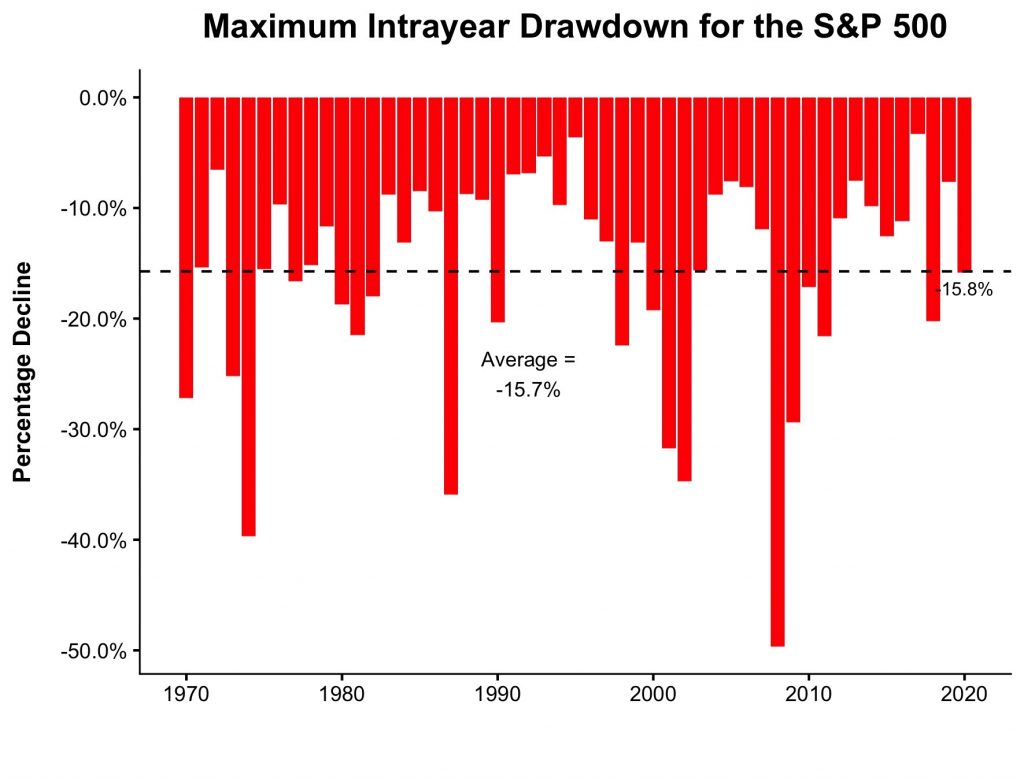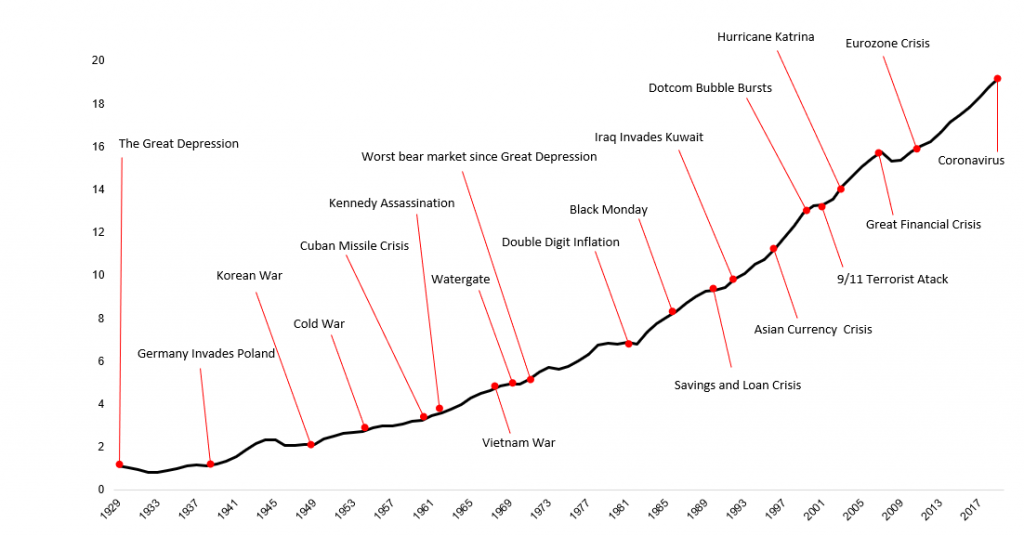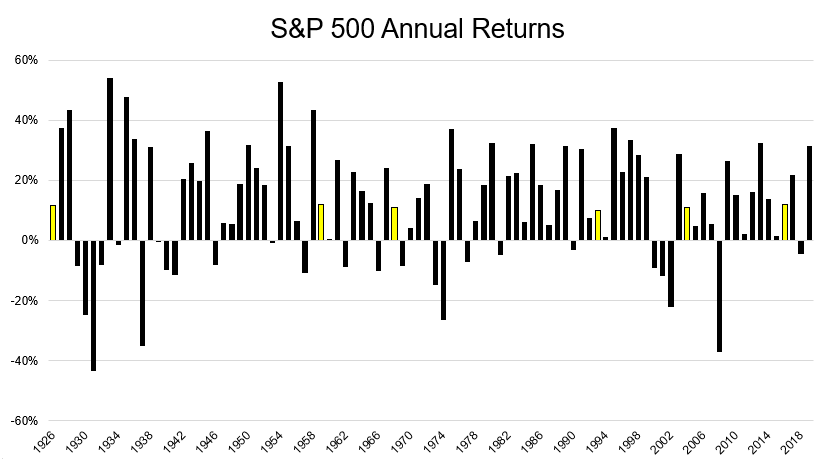There’s logic and there’s emotion. If you make decisions based upon the former the following is for you. If you prefer the latter (or delude yourself into thinking you’re the former but are truly the latter) skip the logic section.
LOGIC:
Over time the prices of financial assets such as stocks/equities generally increase. Stock prices are far from just numbers. They’re representative of something real – underlying companies engaged in the business of societal progress through the creation of products, services and jobs.
We measure the value of progress using Gross Domestic Product. Look at how GDP has grown through periods of natural disaster, military exercises, financial uncertainty, etc:
Over time GDP growth passes through corporations to the hands of stockholders who have been rewarded with average returns of roughly 10%/yr. Short-term returns, however, are often driven by overly positive (i.e. greed) or negative (i.e. fear) feelings. It’s why over the past 100 years or so only six times were annual returns even close to the 10% average. See for yourself:
The cost to play the game is understanding that large increases/decreases in prices are analogous to airplane turbulence. The discomfort is normal and expected and has no impact on the plane safely arriving at its planned destination. Seasoned investors know this chart well:
 Yes, you’re reading that correctly. A 15.7% difference between the market high and low for the year is typical. Last week’s declines were as overstated as today’s recovery. Neither accurately reflects economic activity, GDP or progress. They reflect fear which is hardly the basis for sound decision-making. Speaking of which…
Yes, you’re reading that correctly. A 15.7% difference between the market high and low for the year is typical. Last week’s declines were as overstated as today’s recovery. Neither accurately reflects economic activity, GDP or progress. They reflect fear which is hardly the basis for sound decision-making. Speaking of which…
EMOTION:
Your life is a series of highs and lows. It’s borderline manic. Big Media loves you. You hang on every word. Here’s the stress you caused yourself over the past few days:
Recency Bias: Inclusive of dividends the S&P 500 was up over 30% in 2019. YTD the index is off a couple of percentage points. You ignored the former and focused on the latter.
Extrapolation: The logical next step from Recency Bias is projecting into the future the decline of the past few days. Now why does the phrase “past performance is not indicative of future results” sound so familiar? Oh, right, it’s stamped across the front page every investment prospectus.
Loss Aversion: It hurts more to lose $1 than it feels good to earn $1. You focused on the former and ignored the latter despite their equal economic value.
Anchoring: We like to call this price fixation. On Feb 19th of this year the S&P 500 hit an all-time high. After the recent volatility it’s hovering around Oct 2019 levels. You’re focused on the former. How would you have felt if back in October someone told you the market would trade sideways over the next few months?
Hindsight: The S&P 500 has increased over 500% since the March 2009 yet at various points in 2010, 2011, 2012, 2013…2019 and 2020 you’ve “felt” (not “thought”) it can’t continue higher. Congratulations – you were “right” 500% after the fact.
TAKEAWAY:
We’re not patting on the back the logicians while simultaneously demeaning those that emote. It’s OK to think. It’s OK to feel. It’s just fine to do both. What isn’t fine is letting the emotional override the logical when it comes to making decisions.
Stocks are the clear winner when it comes to building wealth. You just have to be willing to ride out the turbulence. Buckle up!



Leave A Comment